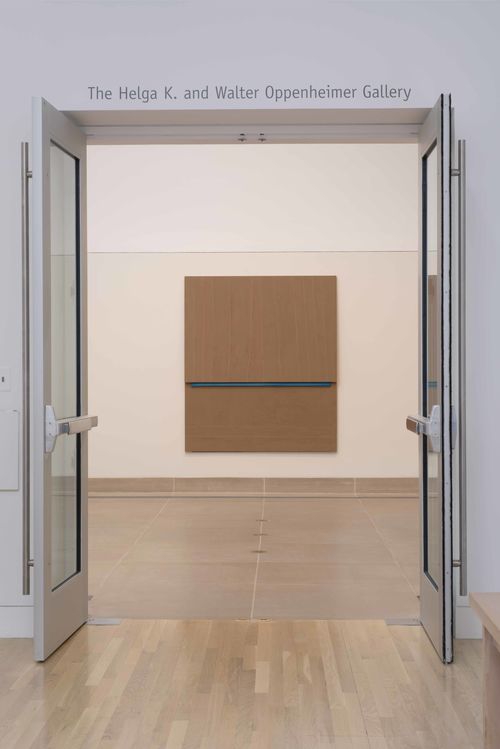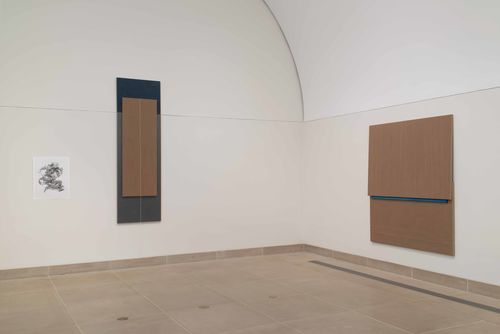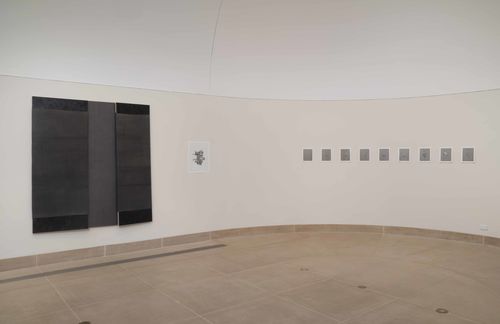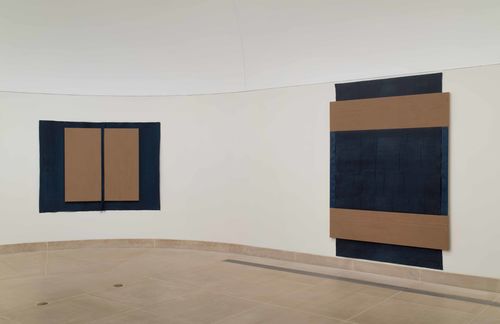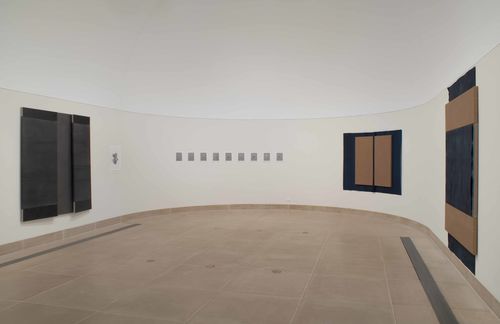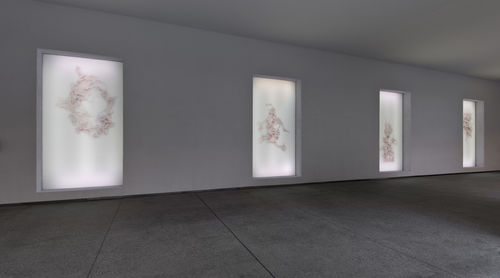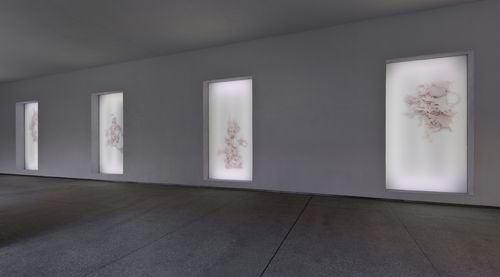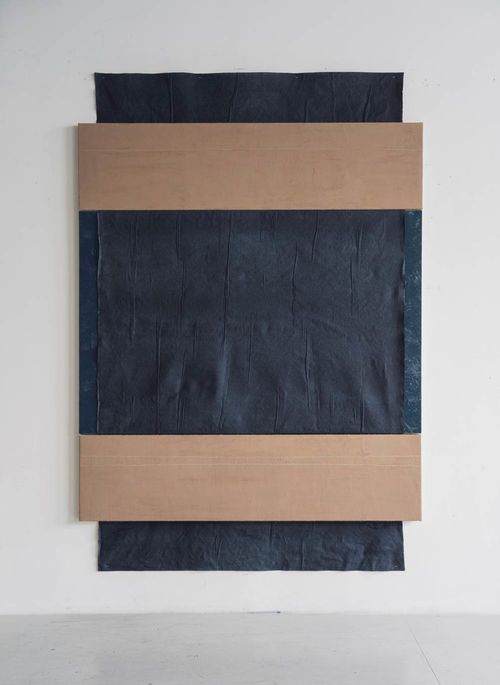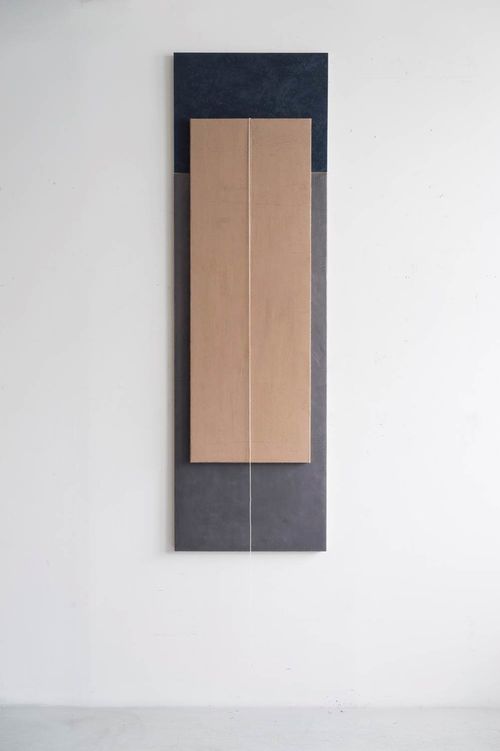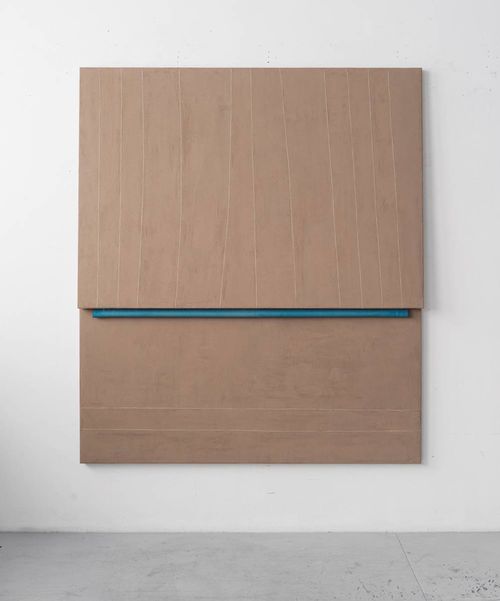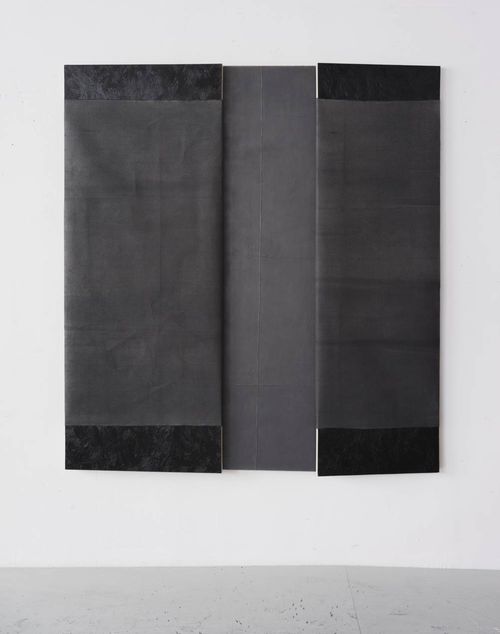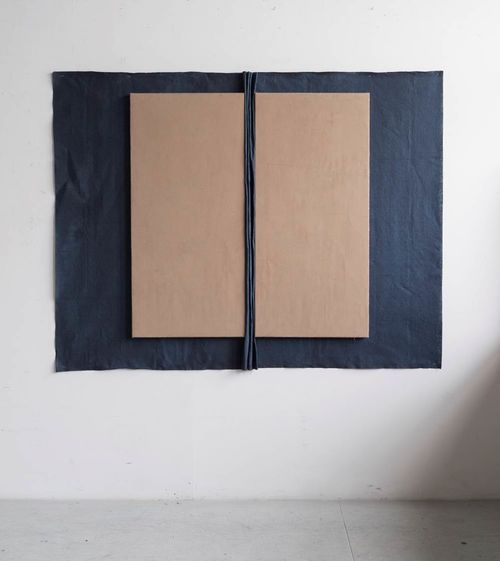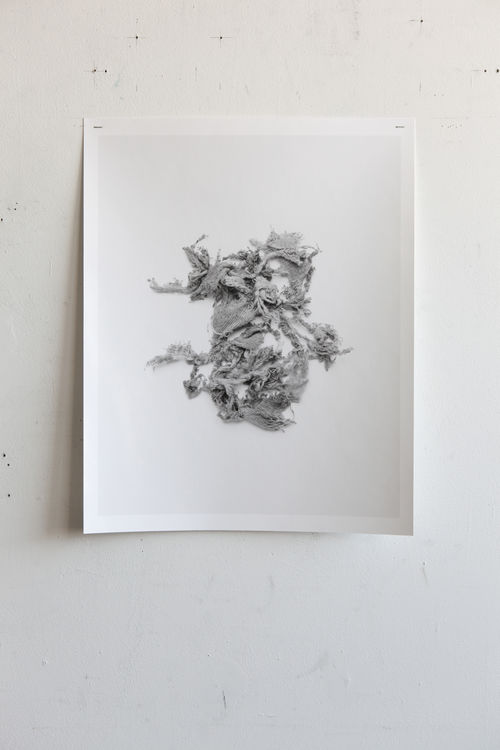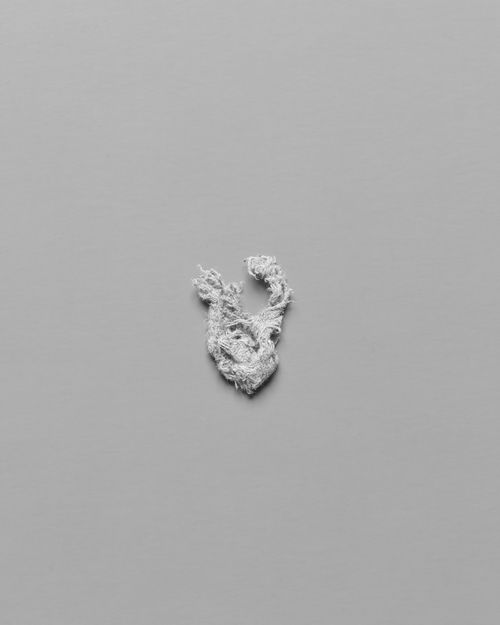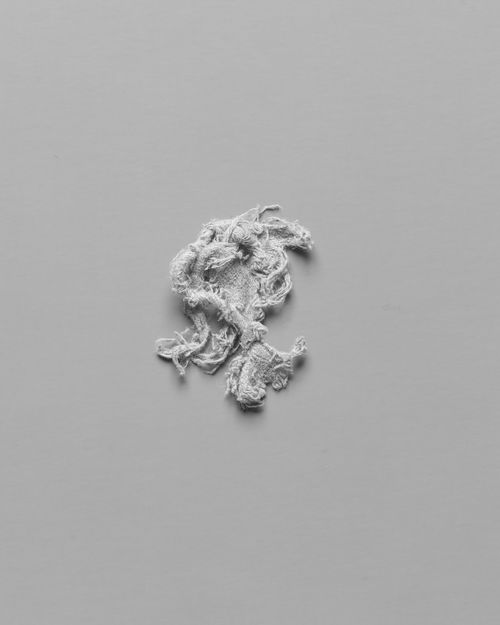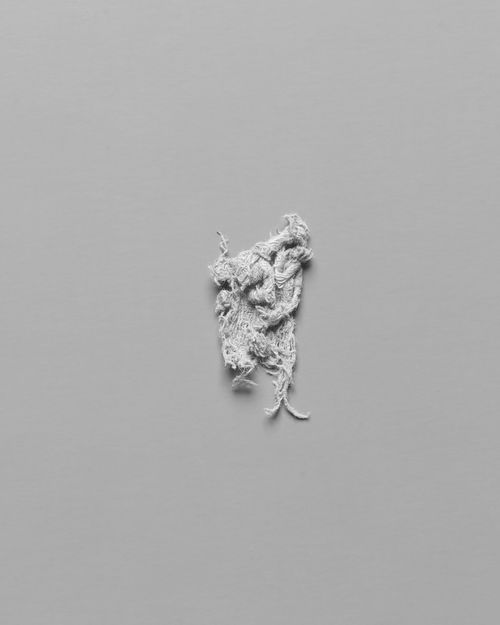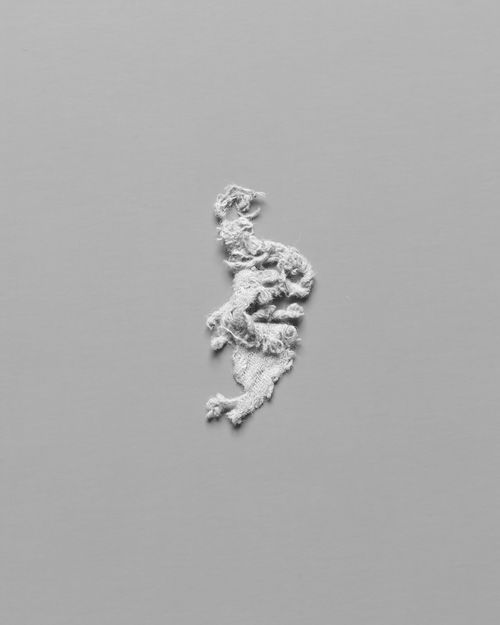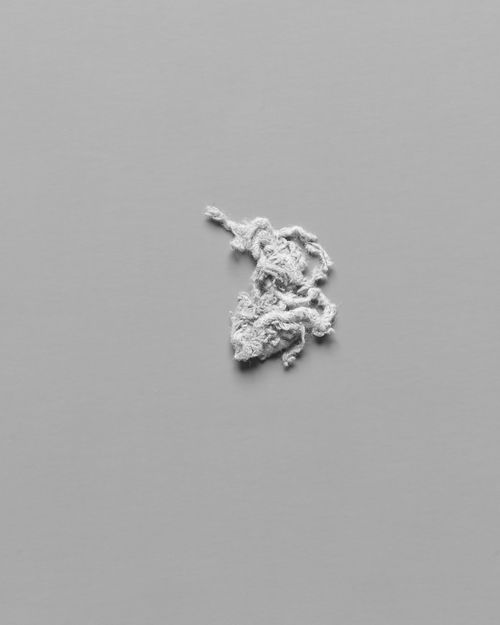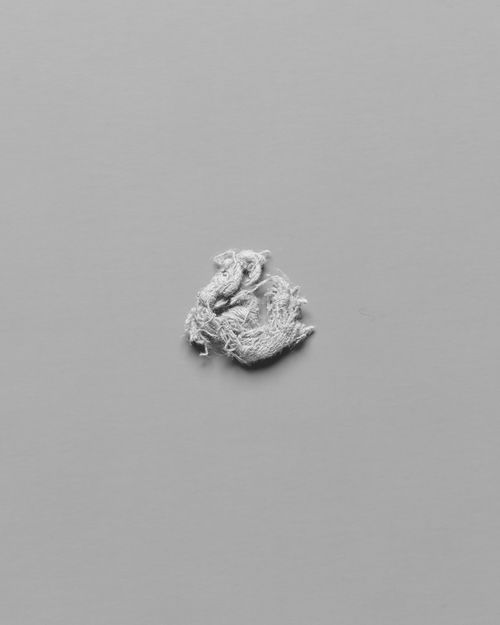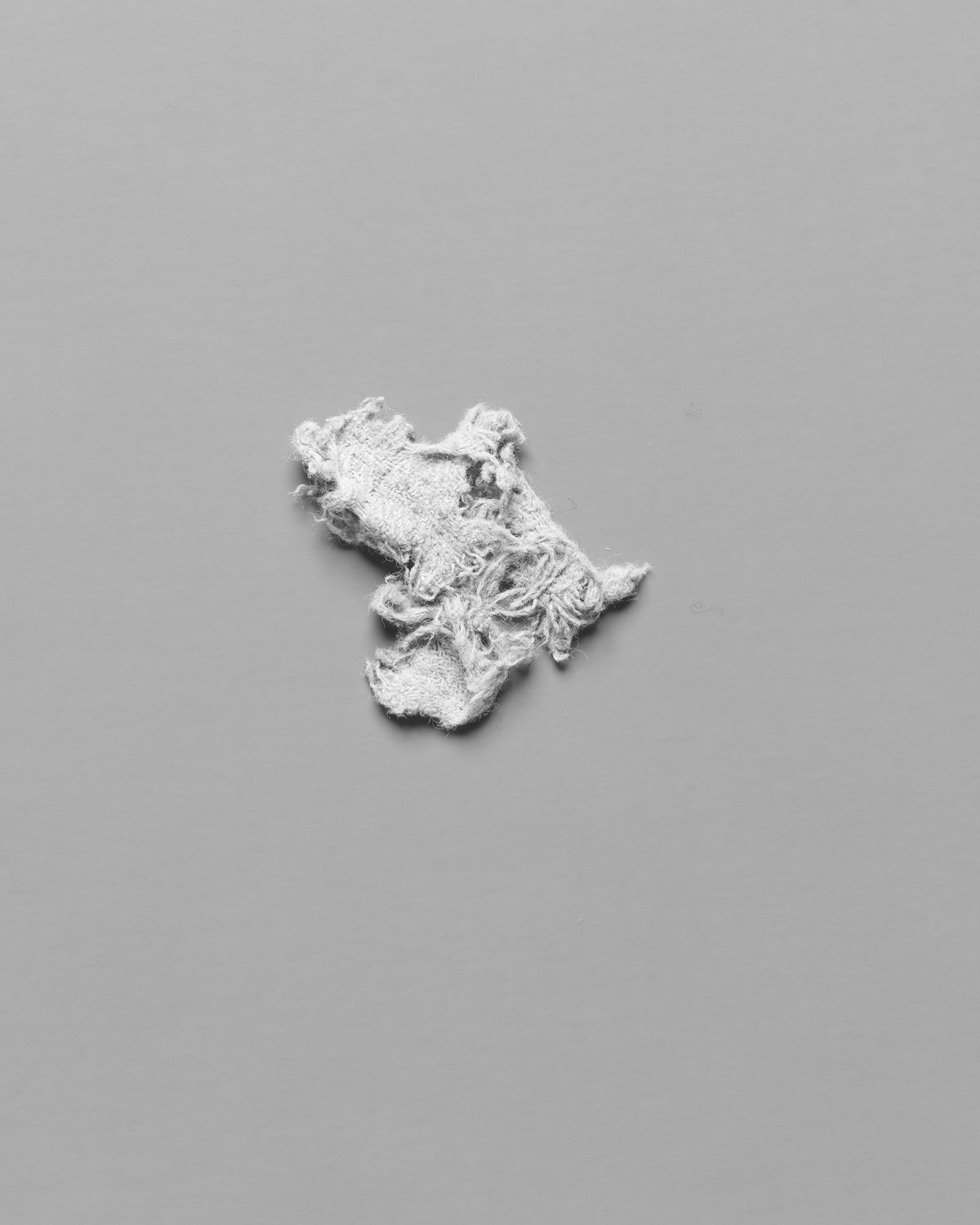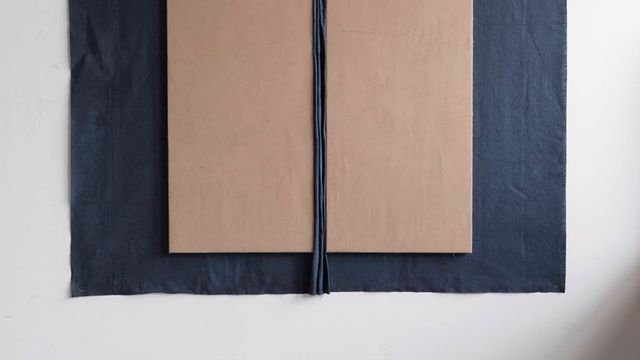
Hammer Projects: N. Dash
- – This is a past exhibition
N. Dash’s work in drawing, painting, and photography is rooted in her ongoing experimentation with materials. Constantly occupying her hands with working small bits of fabric between her fingers, Dash’s intentional process of touch yields artifacts that are the building blocks of her work. When the greyed, fraying fabric is just short of losing its structural integrity, Dash sets it aside and takes up a new piece of fabric to begin the process again. She then photographs these “artifacts”, arranging them individually or in small groups. The resulting silver gelatin prints range in scale and communicate the artifacts’ presence and meaning as manifestations of process, labor, thought, and time—they are the tangible evidence of intangible phenomena. Hammer Projects: N. Dash will include eleven new photographs and a special project for the courtyard light boxes, taking these fabric works as a starting point. Along with her photographs, the exhibition will include new paintings. Since her first visit to an adobe building in New Mexico in 2003, Dash has worked with a variation on traditional adobe on jute in her paintings. Also working with indigo and graphite; prepared oil and acrylic paints; canvas and linen, she combines stretched and unstretched elements into carefully constructed compositions that refer to both landscape and architecture. Often large in scale, they offer an immersive experience that suggests a portal to an ephemeral elsewhere. Organized by guest curator Corrina Peipon, Hammer Projects: N. Dash is the artist's first one-person museum exhibition.
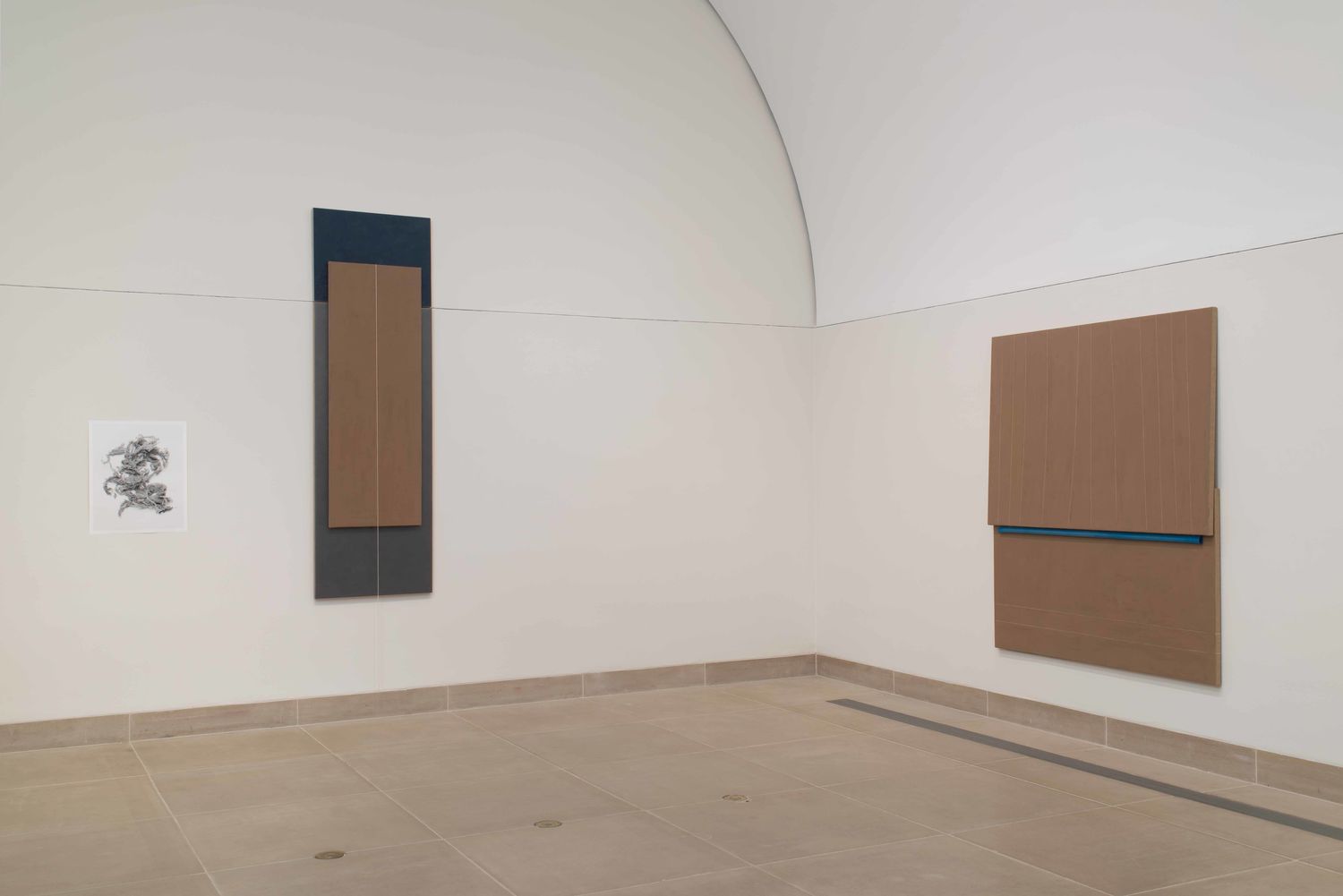
Biography
N. Dash was born in Miami Beach, Florida in 1980. She earned a BA from New York University in 2003 and a MFA from Columbia University in 2010. In 2013, Dash’s work was presented in a one-person exhibition at White Flag Projects in St. Louis, Missouri. Her work has been featured in thematic exhibitions such as The Possible, Berkeley Art Museum, Berkeley, CA (2014); The Independent: Dreams That Money Can’t Buy, Maxxi Museum, Rome, Italy (2014); Painting in Place, Farmers and Merchants Bank presented by Los Angeles Nomadic Division, Los Angeles, CA (2013); My Crippled Friend, Columbus College of Art and Design, Columbus, OH (2013); Notations: Contemporary Drawing as Idea and Process, Kemper Art Museum, Washington University, St. Louis, MO (2012); Transient Response / Land Tender, High Desert Test Sites, Joshua Tree, CA (2011); and Something for Everyone, Aldrich Contemporary Art Museum, Ridgefield, CT (2010).
Essay
There is where there
Corrina Peipon
For as long as she can remember, N. Dash (who goes by her surname) has occupied her hands by working small bits of fabric between her fingers. This idiosyncratic activity results in what Dash refers to as “primary source material,” from which all her ideas emerge. While thinking in her studio, talking with friends, watching a movie, standing in line at the grocery store—during most of her waking hours—she rolls and folds and otherwise works a small piece of white cotton between her fingers. When the grayed, fraying fabric is just short of losing all structural integrity, she sets it aside and takes up a new piece of fabric to begin the process again. These bits of fabric are artifacts of an intentional process of channeling energy into form. Dash began to photograph these artifacts in 2002, and in a sense they are an index of her life and work ever since. To make what she calls her “constructions,” she arranges the artifacts in groups. Set against white, gray, or black backgrounds, the constructions are typically lit brightly and evenly, photographed from above, and then printed on silver gelatin paper. Ranging from diminutive to monumental in scale, the photographs communicate the artifacts’ presence and meaning as manifestations of process, labor, thought, movement, and time: they are the tangible evidence of ephemeral phenomena.
Dash’s exhibition at the Hammer Museum includes unique black-and-white photographs—“portraits” of individual artifacts and constructions—as well as Duratrans transparencies presented in architectural light boxes. The black-and-white photographs are attached directly to the walls with staples, and when the staples are removed, the damage that is incurred becomes part of the work. The evidence of the works’ previous display becomes an indexical mark laid atop the photograph of the original artifact. The photograph then becomes an analogue for the artifact—both a representation of the artifact and an object unto itself—and its objecthood is underscored by its unmediated relationship to the wall. If the fabric artifacts are primary sources, then the photographs seem to be secondary sources, functioning like documentation or reference material in historical or archaeological research. But through their proximity to architecture and the evidence of their display, they also become primary sources.
Dash explained her impulse to allow for the accumulation of staple marks with a simple statement: “There is wear there.” On reading the notes that I had taken during a visit to her Long Island City studio, I saw that I had written down this sentence in quotation marks and then added on the next line, “(There is where there).” My turn of Dash’s phrase refers to Gertrude Stein’s famous lament “There is no there there,” a melancholic but also somehow fanciful description of how she felt when she arrived at the address of her childhood home in Oakland and found that it no longer existed. This idea that a place can be unreliable or impermanent also recalls Robert Smithson’s Nonsites. Smithson, who had moved much of his practice beyond the confines of his New York studio and into a broad geographic field by the mid-1960s, developed the Nonsites as a way to represent the elements and forms associated with a specific place (site-specific earthworks) within a gallery or museum: the Nonsites, then, are indoor earthworks. A Nonsite is a portable proxy for a fixed location that is both a representation of an artwork located in that original site and a work unto itself. This simultaneity and itinerant energy are also found in Dash’s work; it can and does occur in more than one place.
Dash visited New Mexico for the first time in 2003 and goes there several times each year. On her first visit she went to the site of an adobe building, where she noticed a pit in the earth adjacent to it. Once inside, she realized that this was the negative space left after the dirt used to construct the building had been excavated. She had the presumably disorienting but pleasurable sensation of standing inside the earth while remaining aboveground. The impression of this experience was so distinct that its reverberations are still evident in her work. Dash uses this same New Mexican earth in an ongoing body of work, including the paintings in this exhibition. The dirt is mailed to her studio, where she repeatedly sifts it until it is fine enough to mix into a variation of traditional adobe. The tooth of the jute fabric support holds the adobe in place. In addition to adobe and jute, Dash uses indigo and graphite as well as prepared oil and acrylic paints on canvas or linen. Both the materials and their application (she uses her fingers, hands, and rags more often than she uses brushes) lend tactility to the surfaces. The works derive much of their color and materiality directly from the earth, and her extensive underpainting creates luminosity. She combines stretched and unstretched elements in carefully arranged compositions that refer to both landscape (in their palette, their reference to expansive space, their formless elements) and architecture (via their materiality, their structure and geometry). The works’ large scale envelops the viewer and evokes Dash’s first visit to an adobe structure.
Dash’s paintings spring from an experience of going to a place, reckoning with the character of that place, and then attempting to represent the experience. The objective is not so much to illustrate what the place looks like but to give a sense of what it feels like to be there, of what that place actually is. Again Smithson comes to mind. In their incorporation of earth transported from one place to another, Dash’s paintings are like Nonsites relating their origins in the New Mexican desert. Smithson’s Nonsites and Dash’s paintings exist in two places at once, and we as viewers experience two “places” at once: the external world (the physical object that we are encountering in the present moment) and the internal world (our intellectual capacity to imagine the place where the object originated).
In all her work Dash uses prescribed, labor-intensive processes to translate haptic experience into representational objects that are also abstract. These works appear to be intentionally composed colors and forms, and indeed they are. But while she strives to make an aesthetic object, pure abstraction is not her primary interest. And though the processes she engages are fundamental to the making of her work, process as a concept is also not her main focus. Rather, it is the attempt to represent labor and experience that is paramount. That the works achieve this is the result of their dependence on touch as a means to transfer and communicate energy. Positioning herself as a medium, Dash travels between the outside world and an inside world where amorphous elements are given form.
Hammer Projects is a series of exhibitions focusing primarily on the work of emerging artists.
Hammer Projects is made possible thanks to the generous support of the Horace W. Goldsmith Foundation, Susan Bay Nimoy and Leonard Nimoy, Hope Warschaw and John Law, and Maurice Marciano.
Additional support is provided by Good Works Foundation and Laura Donnelley, the Decade Fund, and the David Teiger Curatorial Travel Fund.



